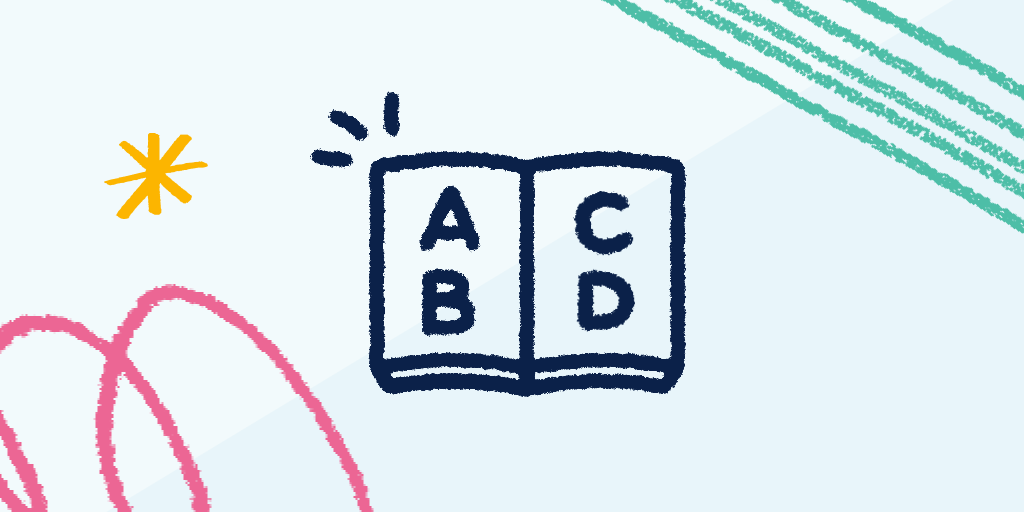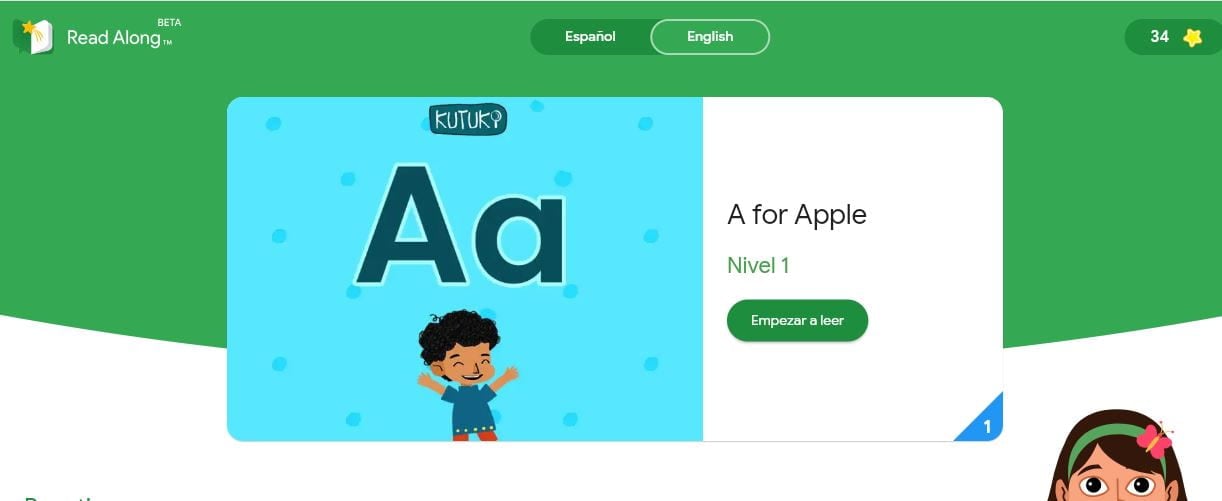4 actionable lessons teachers can use today
By Allison Leedie, M.Ed, partnerships manager at Khan Academy Kids and former teacher and literacy coach
Planning time is limited, the copier is jammed, and a classroom observation is imminent. Sound familiar? Me too.
As a former teacher and literacy coach, I know that sometimes what is most helpful are actionable lessons and activities you can deploy right now with little preparation but tons of engagement.
Search no further! Below are four activities you can use today to support best practices in the science of reading, no matter what stage of literacy development your learners are engaged in
Pre-Literacy
For our very youngest students, actual reading and writing may be a ways off. Pre-literacy is the period of time before a child can read or write on their own. Children start developing pre-literacy skills as soon as they are born, and there is a body of research that shows a solid pre-literacy foundation will lead to long-term success both in and out of school.
Pre-literacy can include:
Narrative skills
Vocabulary development
Print Awareness
Print Motivation
Letter knowledge
Use it today:
Explore more:
The Khan Academy Kids app has activities for children as young as 2 years old and includes many pre-literacy activities. In the Library, make sure you’ve set the dropdown menu to select Kindergarten or Pre-K. In the Videos tab, check out the Early Reading and Language collection. This will also give you models for pre-literacy skills to call upon during whole or small-group instruction.
Phonics
Phonics is the connection between letters and the sounds that they make. Phonics instruction covers many different skills and often takes years to master. It’s typical for a child to begin their phonics journey between the ages of 3 and 5 and keep working on these skills well into 3rd grade. During this process, students will learn:
The sounds each letter makes
How to identify and say the beginning, middle, and end sounds of words
How to identify and say short and long vowel sounds
The sounds pairs of letters can make together (“sh” or “th” for example)
How to decode words (how to break a word into parts and say each part)
How to blend words (how to put separate sounds together to read a word smoothly)
Use it today:
Check out this video, where we learn about the letter S from our friend Ollo. You can share this video with your students and then practice finding the letter S in books, around the classroom, or in friends’ names.
This video of Kodi talking about beginning sounds is an example of how your students will be introduced to different elements of phonics, such as phonemes (individual sounds), in our app. You can share this video and then play a similar game with students with items “locked” in a box until they can isolate the beginning sound.
Explore more:
Download the free Khan Academy Kids app and explore the Letters tab. Here you’ll find lessons and practice activities on every upper and lower case letter, as well as isolated letter sounds and beginning, middle, and ending sounds. You can easily differentiate letter practice by assigning certain letters to individual students.
Because phonics practice can span such a long period of time in your student’s lives, it’s important to follow a sequence to make sure they’re building skills in a helpful order. Check out the Reading Foundational Skills practice in the Reading tab of the Library. You can adjust the grade level to find easier or more challenging phonics activities at each level.
Fluency
When a child begins to move into the world of independent reading, there are several skills and strategies we can use to help them become happy, confident readers.
After a student has the building blocks of reading, the main focus shifts to developing a child’s fluency as they begin to read independently. A fluent reader will have an easier time understanding what they read and is more likely to enjoy reading. To help students develop fluency, you can provide practice with sight words and decodable texts.
Use it today:
As a class, watch this video on the sight word “come.” Then practice writing that word using the Create tab in the Khan Kids app. Students can also play other sight word games inside the app to help strengthen their automaticity and accuracy when reading a sight word.
Explore more:
Khan Academy Kids has decodable texts throughout our library. In the Books tab, scroll down to the Early Readers section of the Library. These stories are written using only sight words and words a young reader should be able to sound out. First, have them listen to the story read aloud by selecting the “Read to Me” button. Next, have them read the same story, this time choosing “Read by Myself.” Have your students read the book aloud and repeat the reading until they sound fluent. Be sure to stop or go back to listening to the book if they start to feel frustrated. For older learners, you can try this same process using the 1st and 2nd Grade Early Readers in the Library. These books are also decodable, but they will have more difficult phonics patterns.
Comprehension
Good readers don’t just say words aloud—they form a picture in their mind of the story, making a mental movie to help them imagine the events as they happen. Readers who are good at comprehending also think beyond the story. They make connections to what they already know, make inferences and predictions, and think about the story after they are done reading. Students have been developing comprehension skills since birth but now must combine this knowledge with their independent reading abilities.
Use it now:
Khan Academy Kids has an entire series of lessons dedicated to explicit comprehension practice. For example, you could watch this video about making inferences about characters. Then, pick a story to read aloud together as a class. Use an anchor chart to list clues you notice about the characters.
Explore more:
Reading and thinking about what you read are the best ways to build comprehension skills. Luckily, Khan Academy Kids has over 400 books built right into our app! You can see all the books in one place by going to the Books tab in the Library. Here, your students can either have the book read aloud to them or read it on their own.
Another way to view our books is by clicking on the Reading tab in the Library. When students select a book in the Reading tab, they will be asked supporting comprehension questions as they read. This can be really helpful as they work on developing their mental movie and comprehension skills. Encourage students to pause and answer the question aloud before turning the page.
Find out more
If you’re using Khan Academy Kids for the first time in your classroom, we’ve got plenty of resources to get you started here.
If you’re an administrator looking to bring high-quality literacy practice to your school or district, get in touch with us here.
We’re excited to support your students as they enter the magical world of reading!
The post The Science of Reading in a Nutshell appeared first on Khan Academy Blog.
4 actionable lessons teachers can use today By Allison Leedie, M.Ed, partnerships manager at Khan Academy Kids and former teacher and literacy coach Planning time is limited, the copier is jammed, and a classroom observation is imminent. Sound familiar? Me too. As a former teacher and literacy coach, I know that sometimes what is most
The post The Science of Reading in a Nutshell appeared first on Khan Academy Blog. ELA, Khan Academy Kids, News, early learning, early literacy, Science of reading Khan Academy Blog








